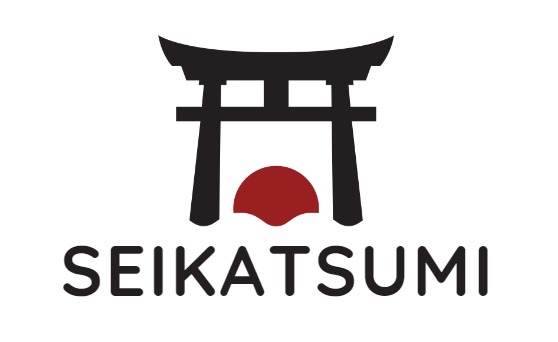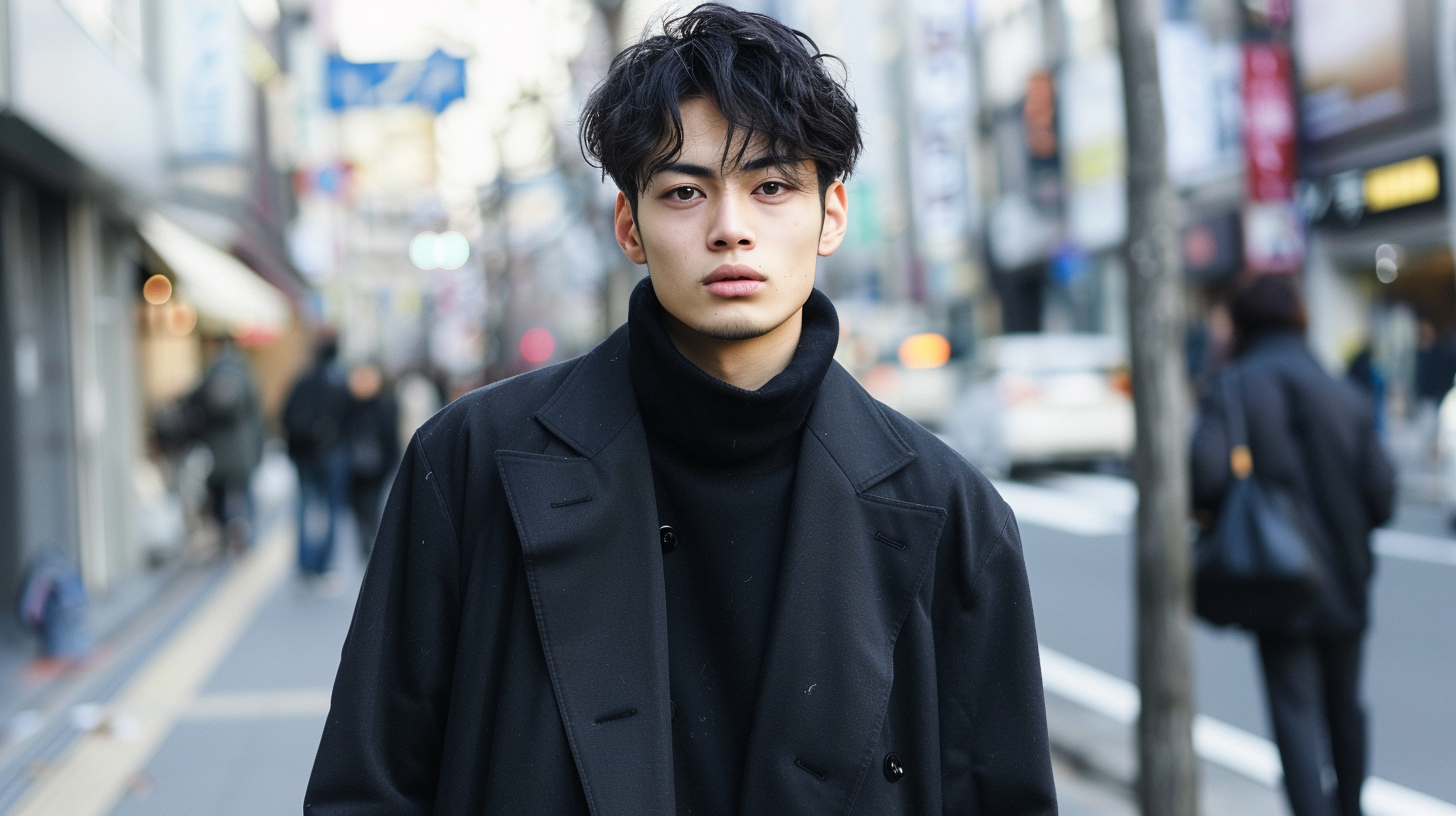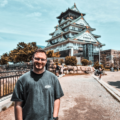Are you as captivated by Japanese men’s fashion as I am? I’m right there with you!
Finding those perfect, unique styles can be a journey, and I’ve spent countless hours diving into the fascinating world of Japanese menswear. It’s not just fashion; it’s a craft that merges traditional and modern elements in the most extraordinary ways.
I’m thrilled to bring you into the realm of Japanese men’s fashion, where every piece tells a story.
Whether you’re on the hunt for a bold statement piece or a timeless classic, Japanese menswear offers an array of choices.
Let’s embark on this stylish adventure together. Ready to add some exceptional Japanese flair to your wardrobe? Let’s dive in and explore! 🙂👘
Historical Evolution of Japanese Men’s Fashion
As a fashion enthusiast, I am excited to delve into the historical evolution of Japanese men’s fashion.
Japanese fashion has a rich history that dates back to ancient times. Japanese Men’s Fashion has undergone significant changes over the years, influenced by various factors such as social status, culture, and foreign influence.
Here are some major historical periods that have shaped Japanese men’s fashion:
Edo Period Influences

The Edo period (1603-1868) was a time of relative peace and stability in Japan, which allowed for the development of a unique fashion culture. During this period, the samurai class emerged as a dominant social group, and their clothing style influenced men’s fashion.
The samurai wore traditional Japanese clothing such as the kimono and hakama, which were made from silk and other luxurious fabrics.
The kimono was a long robe with wide sleeves and a broad sash, while the hakama was a wide-legged pant that resembled a skirt.
These garments were often dyed in vibrant colors and decorated with intricate patterns.
Meiji Era Modernization
The Meiji era (1868-1912) marked a period of modernization and Westernization in Japan.
The government encouraged citizens to adopt Western clothing styles as a symbol of progress and modernity. Men began to wear suits, ties, and other Western-style clothing.
However, traditional Japanese garments such as the kimono and hakama remained popular among the older generation.
During this period, Japanese Men’s Fashion became more diverse, with different styles for different occasions.
Post-War Trends and Western Influence

After World War II, Japan experienced a rapid economic growth that led to a surge in Western influence. Men’s fashion became heavily influenced by American and European styles, with denim jeans, leather jackets, and sneakers becoming popular.
However, traditional Japanese garments such as the kimono and hakama remained a symbol of cultural heritage and were still worn on special occasions.
Today, Japanese men’s fashion is a blend of traditional and modern styles, with designers incorporating traditional elements into contemporary designs.
In conclusion, Japanese men’s fashion has a rich history that has been shaped by various historical periods and cultural influences.
From the traditional garments of the samurai to the modern suits of today, men’s fashion in Japan continues to evolve and adapt to changing times.
Contemporary Styles and Streetwear
As a lover of Japanese men’s fashion, I am always excited to explore the latest contemporary styles and streetwear trends.
Japan has always been at the forefront of fashion, and this is especially true when it comes to streetwear.
Here are some of the most exciting contemporary styles and streetwear trends in Japan today:
Harajuku and Shibuya Trends

Harajuku and Shibuya are two of the most popular fashion districts in Tokyo, and they are known for their vibrant, colorful, and eclectic styles.
In Harajuku, you will find many young people sporting bright colors, bold patterns, and unique accessories.
Shibuya, on the other hand, is more focused on streetwear and urban fashion, with a lot of emphasis on oversized silhouettes, baggy pants, and graphic tees.
Minimalism and the Monochrome Movement

While Harajuku and Shibuya are known for their bold and colorful styles, there is also a growing movement towards minimalism and the use of monochromatic colors.
This trend is characterized by clean lines, simple silhouettes, and a focus on neutral colors such as black, white, and gray.

Many Japanese designers are embracing this trend, and it is becoming increasingly popular among fashion-forward men.
High Fashion and Designer Influence

Japan has always been known for its high fashion, and this is especially true when it comes to menswear.
Many Japanese designers are world-renowned for their innovative designs, impeccable craftsmanship, and attention to detail. Some of the most influential designers in Japan today include Yohji Yamamoto, Issey Miyake, and Junya Watanabe.

Japan is a hub of contemporary styles and streetwear trends, and there is always something new and exciting to discover.
Whether you are drawn to the bold and colorful styles of Harajuku and Shibuya, the minimalism and monochrome movement, or the high fashion and designer influence, there is something for everyone in the world of Japanese men’s fashion.
Hey you! Are you interested in more fashion trends? Then be sure to check out our top fashion articles! You definitely can’t miss it!
Japanese Traditional Clothes Men: The Best Timeless Fashion Of Japan In 2024
Japanese Winter Jeans Styles Men: Best Cozy and Sytlish Outfits 2024
Traditional Attire in Modern Fashion
As a lover of Japanese fashion, I am excited to share with you the beauty of traditional attire in modern fashion.
Japanese traditional clothing has been around for centuries and has evolved over time to become a part of modern fashion.
Incorporating traditional attire into modern fashion is a great way to express one’s individuality and appreciation for Japanese culture.
Incorporating the Kimono

The kimono is a traditional Japanese garment that has been worn by both men and women for centuries. It is a versatile piece of clothing that can be worn in many different ways.
In modern fashion, the kimono is often used as a statement piece. It can be worn over a t-shirt and jeans or paired with a skirt or dress.
The key to incorporating the kimono into modern fashion is to keep the rest of the outfit simple.
Yukata and Festive Wear

The yukata is a type of kimono that is worn during the summer months and at festivals. It is made of lightweight cotton and is perfect for staying cool in the hot and humid Japanese summers.
In modern fashion, the yukata can be worn as a casual summer dress or paired with jeans for a more casual look.
Festive wear, on the other hand, is more formal attire that is worn during special occasions such as weddings and tea ceremonies.
Festive wear includes the hakama, a type of skirt worn by men, and the montsuki, a type of kimono worn by both men and women.
In modern fashion, festive wear can be worn to formal events or paired with more casual pieces for a unique look.
Samue and Jinbei in Casual Style
Samue and Jinbei are two types of traditional Japanese clothing that are perfect for casual wear. Samue is a type of workwear that is worn by monks and craftsmen.
It is made of cotton and is comfortable and easy to move in. In modern fashion, samue can be worn as a casual outfit or paired with more formal pieces for a unique look.
Jinbei is a type of traditional Japanese clothing that is worn during the summer months.

It is made of lightweight cotton and is perfect for staying cool in the hot and humid Japanese summers. In modern fashion, Jinbei can be worn as a casual outfit or paired with more formal pieces for a unique look.
Incorporating traditional attire into modern fashion is a great way to express one’s individuality and appreciation for Japanese culture.
Whether you choose to wear a kimono, yukata, samue, or Jinbei, there are many ways to incorporate traditional attire into modern fashion.
Influence of Pop Culture and Media

As a fashion enthusiast, I cannot overlook the impact of pop culture and media on Japanese Men’s Fashion.
Japan has been a hub of pop culture, and it has influenced fashion trends across the globe.
Anime and Manga Inspired Fashion
Anime and manga have had a significant impact on Japanese fashion. The distinct and bold styles of characters in anime and manga have inspired many designers to create unique clothing lines.
The fashion industry has used anime and manga as a source of inspiration for designing outfits that cater to the youth.
The fashion style inspired by anime and manga is known as “anime streetwear,” which is characterized by bold colors, oversized clothing, and graphic prints.
J-Pop and Celebrity Fashion Icons

Japanese pop culture has given rise to several fashion icons. J-Pop stars like G-Dragon, Taeyang, and T.O.P have inspired fashion trends with their unique style.
These celebrities have collaborated with fashion brands to create clothing lines that cater to their fans. Their fashion style is characterized by bold and daring outfits that are not afraid to push the envelope.
The influence of pop culture and media on Japanese menswear cannot be overlooked. Anime, manga, J-Pop, and celebrity fashion icons have all played a significant role in shaping Japanese fashion trends.
As a fashion enthusiast, I am excited to see what the future holds for Japanese menswear and how pop culture will continue to inspire fashion trends.
Accessories and Footwear
As I explore the world of Japanese men’s fashion, I cannot help but notice the importance of accessories and footwear in completing a look. From statement pieces to traditional footwear, Japanese fashion has it all.
Statement Pieces and Jewelry

In Japanese fashion, accessories are not just an afterthought; they are often the centerpiece of an outfit. From bold necklaces to intricate bracelets, statement pieces are a great way to add personality to an outfit.
Many Japanese men also incorporate rings into their daily look, often opting for unique designs that reflect their individual style.
When it comes to materials, Japanese fashion often favors natural elements such as wood, leather, and stone. These materials are often paired with metal accents to create a striking contrast.
Sneakers and Traditional Footwear

Japanese fashion is known for its fusion of traditional and modern styles, and this is especially evident in footwear.
While sneakers are a staple in many Japanese men’s wardrobes, traditional footwear such as geta and zori are also popular.
Geta are wooden sandals with a raised platform that are often worn with traditional Japanese clothing such as kimono. Zori, on the other hand, are flat sandals made from straw or other natural materials.
Both geta and zori are designed to be worn with tabi, a type of sock with a split toe that is also commonly worn in traditional Japanese fashion.
In addition to traditional footwear, Japanese men also love sneakers. From classic brands like Adidas and Nike to more niche Japanese brands like Onitsuka Tiger and Asics, there is no shortage of options when it comes to sneakers.
Many Japanese men also opt for sneakers with unique designs or colorways that reflect their individual style.
Overall, accessories and footwear are an integral part of Japanese men’s fashion. Whether you prefer statement pieces or traditional footwear, there are plenty of options to choose from.
My personal favorite outfit

Japanese men’s fashion is a fascinating realm that adeptly balances traditional aesthetics with cutting-edge trends.
Personally, I have a fondness for the basic, yet elegant elements often seen in Japanese fashion. The minimalist approach, emphasizing clean lines and muted colors, creates a sophisticated and timeless look.
Particularly appealing is the integration of slightly bulkier footwear into ensembles. Pairing chunky shoes with a classic black coat or a chic sweater can add an intriguing contrast of textures and styles.
This combination reflects the unique blend of modernity and tradition that Japanese fashion is known for.
The black coat, a staple in many wardrobes, takes on a new life when combined with these statement shoes, elevating a simple outfit to something more fashion-forward.
Moreover, the beauty of Japanese men’s fashion lies in its versatility. It’s not just about being on-trend; it’s about expressing individuality while maintaining an air of understated elegance.
The emphasis on quality and attention to detail in Japanese fashion resonates with those who appreciate craftsmanship and thoughtful design in their clothing.
This approach to fashion not only ensures durability and comfort but also allows for personal expression within the bounds of stylish restraint.
In essence, Japanese men’s fashion, with its blend of minimalism, attention to detail, and willingness to incorporate bold elements like chunky shoes, aligns perfectly with my personal style preferences.
It’s a testament to how fashion can be both functional and a form of self-expression.
Frequently Asked Questions
What is unique about Japanese men’s fashion?
Japanese men’s fashion is known for its blend of traditional styles, streetwear, and cutting-edge trends.
What are some popular trends in Japanese men’s fashion?
Popular trends include minimalist designs, techwear, oversized silhouettes, and vintage-inspired looks.
Where can one find Japanese men’s fashion?
Japanese men’s fashion is available in specialty boutiques, online stores, and in fashion districts in cities like Tokyo.
If you liked this blog article about Japanese Men’s Fashion, don’t forget to follow us on Pinterest so you don’t miss any more fashion tips.
Let us know, which of the above is your favorite Japanese Men’s Outfit!























I “hate” Japanese. They could wear a paper bag and look incredibly cool.
A westerner, would look an idiot.
So jealous 😉